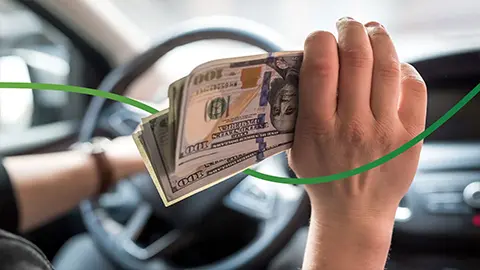What Are Federal EV Credits?
Federal EV credits are financial incentives designed to reduce the upfront cost of new and used electric vehicles. These credits are part of the U.S. government’s strategy to accelerate EV adoption and reduce emissions. The good news? If you are shopping for an EV before September 30, 2025, there is a good chance you can save up to $7,500 or even have that amount applied directly at the dealership.
Understanding how these credits work, who qualifies, and how to claim them can make a big difference in what you pay.
How Much Is the Credit?
- Up to $7,500 for new electric vehicles
- Up to $4,000 for qualifying used electric vehicles
The exact amount depends on factors such as how the car is purchased, where it is assembled, the size of the battery, and how its battery materials are sourced.
Key Rules for New EVs
To receive the full $7,500 federal tax credit on a new electric vehicle, the vehicle must meet specific battery and material sourcing requirements:
- Meets critical mineral sourcing criteria: $3,750 credit
- Meets battery component sourcing criteria: $3,750 credit
- Meets both requirements: Full $7,500 credit
Each half of the credit is awarded separately, depending on the vehicle’s eligibility. Always check the most current IRS guidelines or manufacturer disclosures to confirm which vehicles qualify.
Other requirements:
- Final assembly must occur in North America
- Price caps: $55,000 for passenger cars, $80,000 for SUVs, trucks, and vans
- Income limits: $150,000 for individuals, $225,000 for heads of household, $300,000 for joint filers

Used EV Credit Rules
If you are considering a pre-owned EV, there is a separate tax credit of up to $4,000, or 30 percent of the sale price (whichever is lower).
Eligibility for used vehicles includes:
- Vehicle must be at least two years old
- Purchase price must be $25,000 or less
- Buyer must purchase from a licensed dealer
- Income caps: $75,000 for individuals, $112,500 for heads of household, $150,000 for joint filers
- Credit can only be claimed once every three years
Unlike new vehicle credits, used EVs do not need to meet domestic manufacturing or battery sourcing rules.
Leasing and Upcoming Changes
If you are leasing an EV, the federal credit currently works differently. Because the vehicle is technically owned by the leasing company, they claim the credit and may choose to pass it along to you as an immediate discount. This has meant:
- Foreign-made vehicles may still qualify when leased
- No income limits for lessees
- Credit is often included in the lease price upfront
This leasing flexibility, sometimes called the lease loophole, will end on September 30, 2025. After that date, leased vehicles must meet the same sourcing and assembly requirements as purchased EVs.

Claiming the Credit
If you are buying outright or financing:
- File IRS Form 8936 when doing your taxes
- The credit is non-refundable, which means you must owe at least as much in taxes to claim the full amount
If you are buying in 2024 or later:
- Many dealerships now offer a point-of-sale option, applying the credit immediately as a discount
- There is no need to wait until tax season to benefit from the savings
Important Deadlines
- All new and used EV federal tax credits are scheduled to end after September 30, 2025 unless new legislation extends them
- The current leasing exception will also end on that date
Final Thoughts
Federal EV credits remain one of the most generous incentives available for going electric, but they are set to expire soon. Whether you are buying new, used, or leasing, making your purchase before the September 30, 2025 deadline can save you thousands of dollars. To get personalized eligibility information, visit the GreenCars EV Incentive Tool.
Ready to Keep Learning?
Dive deeper into the incentive opportunities in your state:
← Go Back: EV Incentives Overview: Federal, State, and More
Discover Next: How State and Local EV Incentives Work →














